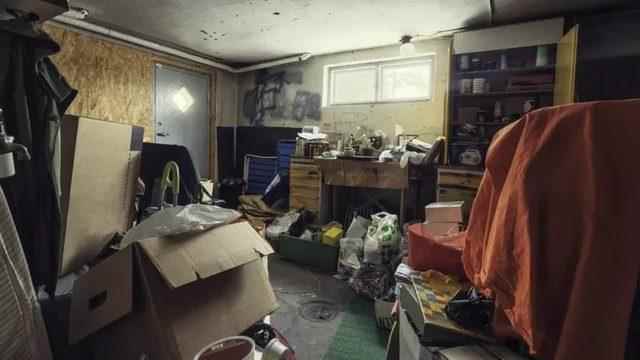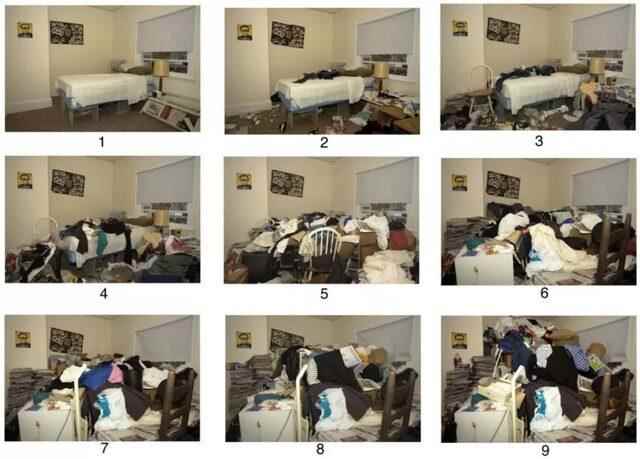During the evacuation of a garbage-filled house in Bursa on July 24, a 9-year-old boy weighing 17 kilograms was found. It was determined that the boy lived with his aunt and was kept in the room for a year.
The garbage house was the subject of constant complaints from the residents and the environment. It was possible to enter the house after the court’s decision to evacuate.
After the incident in Bursa, the “hoarding” syndrome entered the public agenda again.
Kamuran Pınar A., who literally turned the house he lived into a garbage dump, kept his 9-year-old nephew CMA under lockdown at the same time. When Aunt Kamuran Pınar A. did not pay her rent and the people around her complained, the officials who entered the house were stunned by what they saw. After the images that froze the blood of the audience, hoarding syndrome came to mind.
WHAT IS HACKING?
It is estimated that more than 15 million people in the United States have a hoarding disorder. According to the American Psychiatric Association, the disorder affects at least 2.6% of the world’s population and is more common in people over the age of 60 and those with other psychiatric diagnoses such as anxiety or depression.
Cups, empty jars, tins, stuffed animals, plastic cups, CDs… Edward Brown’s house has just about everything.
The objects that Brown had accumulated throughout his life were piled on top of each other, making his home a difficult place to live in.
“Those who come here have nowhere to move,” says Brown, 60, who lives in the northern English city of Blackburn.
Brown; Suffers from a mental disorder known as hoarding syndrome, hoarding disorder, compulsive hoarding, or dysposophobia.
This causes the person to have great difficulty getting rid of objects that other people do not value or attach little importance to.
“This disposal challenge often results in significant clutter that makes the living space impassable, rendering rooms unusable for the purpose for which they were designed,” says clinical psychologist Gregory Chasson, associate professor of psychology at the Illinois Institute of Technology in the US.
From newspapers, magazines, food containers, shoes and cables to umbrellas or bottle caps. Things that are in good condition or that have expired due to overuse become valuable objects for the hoarder.
This is a situation that does not discriminate between men and women, culture or socio-economic status.
According to a study published in the Journal of Psychiatric Research, their symptoms “significantly worsened” during the Covid outbreak.

THE Impulse to SAVE
Another important feature is that people with this disorder have a strong urge to acquire and store objects.
“It’s not just the chaotic environment we can see, it’s also the urge to buy things, collect things, or hoard things that passively come into your life,” says Christiana Bratiotis, associate professor of Business Administration at the University of British Columbia in Canada.
“They want to protect them because of the beliefs they have about these objects and the strong emotional bond they form with them.”
Bratiotis states that some of his patients have told him things like:
“These items mean a lot to me as well as to my sister. Breaking up with them would be like severing all ties with my sister.”
The items the hoarders collected “represent part of their identity,” Bratiotis says.
There is also widespread belief that these objects may one day be needed for their intended use or for an alternative use.

THE DANGERS OF HACKING
The health hazards of ignoring this problem, especially the physical ones, are much more serious than they seem.
Chasson, a clinical psychologist, describes compulsive hoarding as “a major risk that can lead to all kinds of hazardous environments, increasing the likelihood of fire, falls, injury hazards, and diseases such as asthma.”
According to Bratiotis, there is a danger of social isolation of sufferers, of “stigmatization by society which interprets it as a problem of laziness, immorality or lack of personal standards and does not understand it as a mental health problem”.
CONTINUITY
Most people tend to keep things because they are beautiful, evoke good memories, or may be needed someday. From an evolutionary point of view, we come primarily from hunter-gatherers and have a tendency to bring objects into our lives and hide them. But that doesn’t make us hoarders.
It’s important to understand that this is a pattern of behavior and therefore “occurs on a continuum from mild to severe,” explains Bratiotis.
So when are we dealing with a case of compulsive hoarding and when are we dealing with just a “collector’s soul”?
“Sometimes it’s hard to draw that line,” says Chasson.
“Only when it causes impairment or distress in the individual or those around them does it become a problem and can be diagnosed.”
It is also an important sign that daily life at home becomes impossible due to clutter and accumulation.
The image of a house crammed in with no room to move is not a false description, but it is true in the most extreme cases. They are also the subjects of television programs.
For a more accurate depiction, see the photo below, which is one of the resources used to assess when hoarding becomes a mental health issue.

There is a series of images showing 9 separate photos of a living room, kitchen, and bedroom, sorted 1 to 9 by the number of objects accumulated (1 for no clutter, 9 for the most severe clutter).
These are from a study published in the Journal of Psychopathology and Behavioral Evaluation in 2008 and suggests the presence of a post-3 compulsive hoarder.
WHY IS IT WELDING?
But the accumulation of objects is only the manifestation and visible part of the problem.
“Behind the clutter there are parts of this problem, both figuratively and literally, that are less visible, but are crucial drivers for the development of this behavior,” explains Bratiotis.
The combination of certain personality traits such as difficulty making decisions, perfectionism and procrastination can predispose an individual to hoarding syndrome.

Bratiotis speaks of the trait of “these people make decisions more slowly and question their decisions immediately after making a decision.”
“It’s just evolutionary biology, not just genetics or neurobiology, all of these play a role,” he says, noting that there is no single cause of this disorder.
Stating that “a compulsive hoarder’s brain works differently,” Bratiotis says these differences were observed in brain scans of people who were asked to perform tasks that included lifting and throwing their belongings.
He states that “the combination of these causes with some life experiences, and especially experiences of loss, triggers this problem,” and emphasizes that although this problem becomes evident in middle age, it begins to develop in childhood or adulthood.
“Research shows that in more than 50% of cases, the problem occurs between the ages of 11 and 20.”
Chasson notes that the symptoms “may manifest as things like hiding objects that others consider trash,” but above all the thought process and the beliefs surrounding them are influential.
The psychologist says hoarding came about later, because children don’t have the opportunity to collect and store things until old age.

IS THE TREATMENT OF HACKING POSSIBLE?
A cure for hoarding has not yet been found. But the most promising treatment is specialized cognitive-behavioral therapy (CBT).
Broadly speaking, the purpose of CBT is to change the way people think in order to change their behavior and make them feel better.
“The results are modest, but not entirely successful,” says Bratiotis.
Chasson emphasizes that treatment also aims to “interventions to reduce the severity and impact of its consequences and to improve (the person suffering from the condition) quality of life and maintain success.”
“There are also other methods, such as self-help groups with facilitators or different group approaches,” he adds.
Likewise, there is much that families or friends can do to help.
Bratiotis says that first of all, we should approach the problem with empathy and warmth instead of taking an accusatory position, and say ‘I’ instead of ‘you’ and gives the following example:
You might say, “I’m worried about you living in this house because I know you’re going through a tough time; you can’t use this hallway because it’s packed and I don’t want you to fall.” This is very different from saying “You have to clear this corridor or you will fall”.
It’s also important to recognize that friends and family, no matter how well-intentioned, are not always the best people to help.
They can still offer support in seeking and securing outside help to the hoarder.
